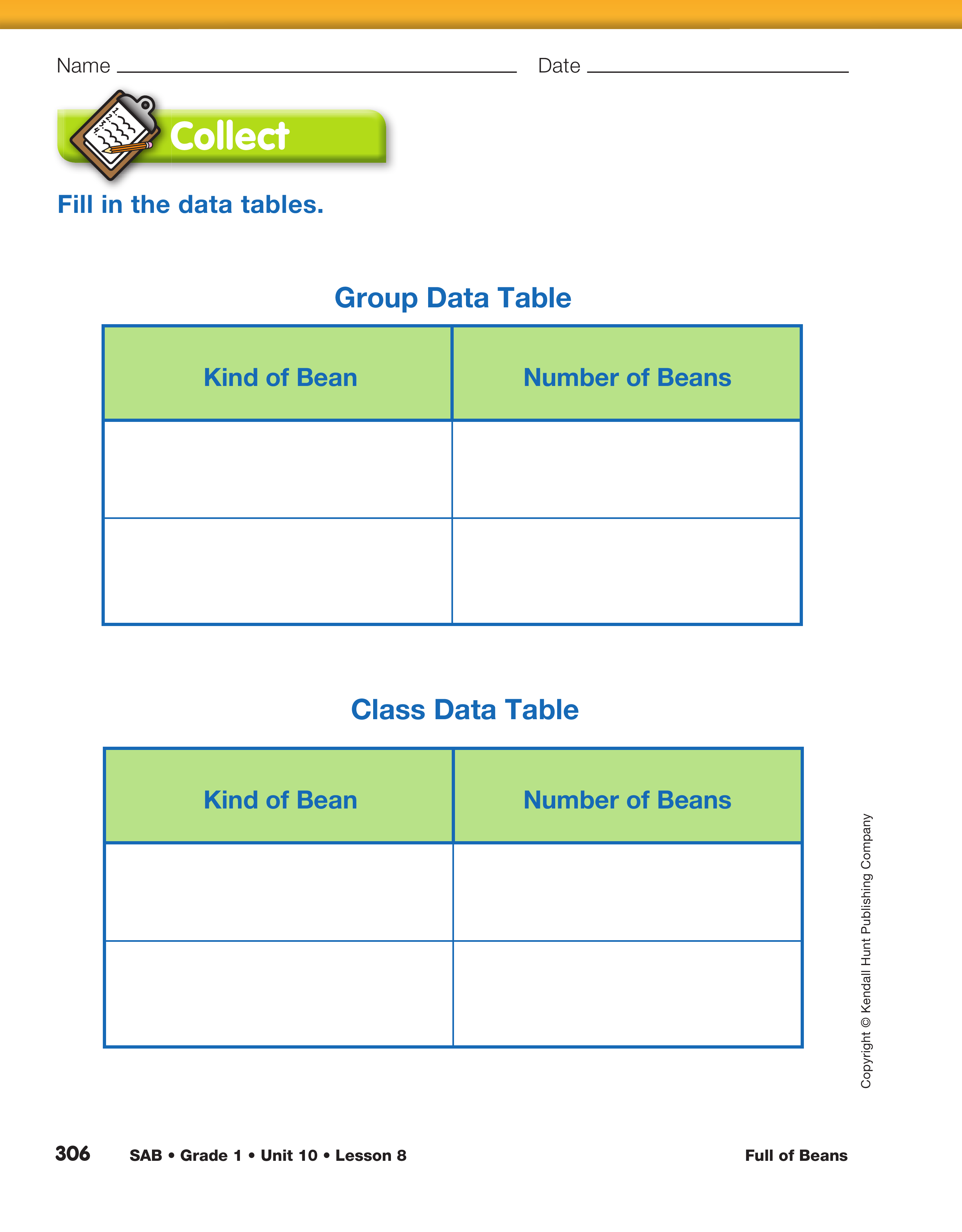Full of Beans
Est. Class Sessions: 3Developing the Lesson
Part 2: Collecting the Data
Group and Count Beans. Distribute 2 two-ounce cups to each pair of students. Ask students to fill one cup with small beans and one with large beans by taking turns to visit the two containers of beans you prepared. Remind students to use a sheet of paper to check the "fullness" of each cup. Ask students to work with their partners to group and count their beans. Once students have collected their data, have them record their numbers in the Group Data Table in the Collect section of the Full of Beans pages. Have them write the name of each bean or make a drawing of each bean in the first column of the table.
When they have finished recording their data, ask:
Allow several students to use a display to show how they grouped and counted the beans by groups of tens and leftover ones. Count by tens and count on the leftover ones as a class.
Find the Median Number of Beans. Have student pairs write the number of small beans they counted on a self-adhesive note. Ask one student from the pair to come to the front of the room with the note and form a line in any order. Tell students they need to find the middle number for the data. If you wish, mention that scientists call this middle number the median. See Content Note. Students should not be expected to remember the term median at this point. Introducing the idea that there is a special name for this number is enough.
Ask:
If students don't suggest it, ask them to order the numbers by performing a version of the Bubble Sort. Students will compare their numbers to their neighbors' numbers and arrange themselves in line in order from least to greatest. Students can use the class number line or a 100 Chart to help them order numbers and to find numbers "in between" if necessary. Some numbers may be repeated. Tell students they cannot ignore the repeated value and that every number needs to be represented. If a number is repeated, those students may simply stand in line next to one another.
When they have a line formed in numerical order, ask:
Comparing data in this way allows students to check the reasonableness of their measurements. The numbers should be fairly close. If they are not, you should discuss what could account for large differences. If a number is far out of range, ask if the student would like to recount their beans and adjust the number.
Ask:
It may be suggested that student pairs with the lowest and highest numbers, the first and last in line, take a seat. If this process is repeated until there is only one number left, the student with the middle number will be the only one standing. It is important that you eliminate each group's number separately if several students had the same number. If two numbers are left, the class can choose the number in between as its median and record it on the Class Data Table in the Collect section of the Full of Beans pages.
To check the class's work, ask students to give their notes to their partners. Ask the new set of students to display their self-adhesive notes in order from least to greatest. Repeat the procedure by crossing off numbers in highest and lowest pairs until you have only one number left. Check the middle number with that on the data table. The values should be the same.
Find the median for the other type of bean and have students record the value on the Class Data Table.















